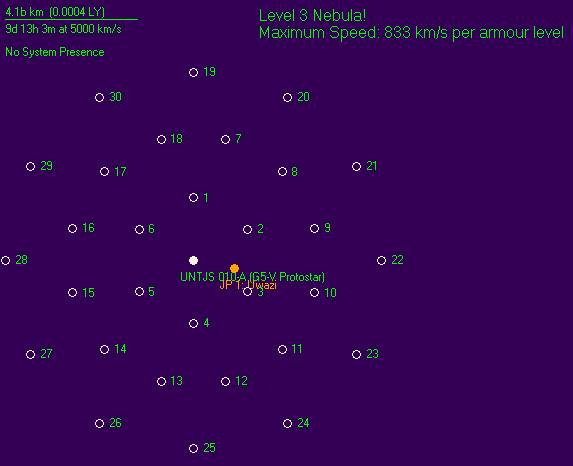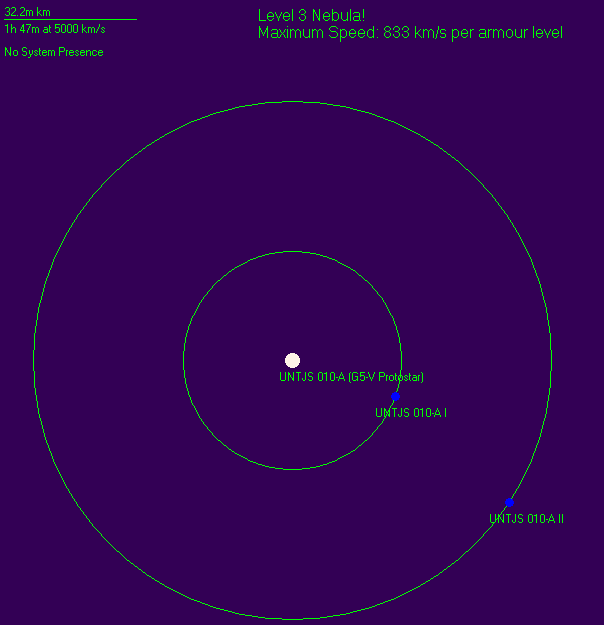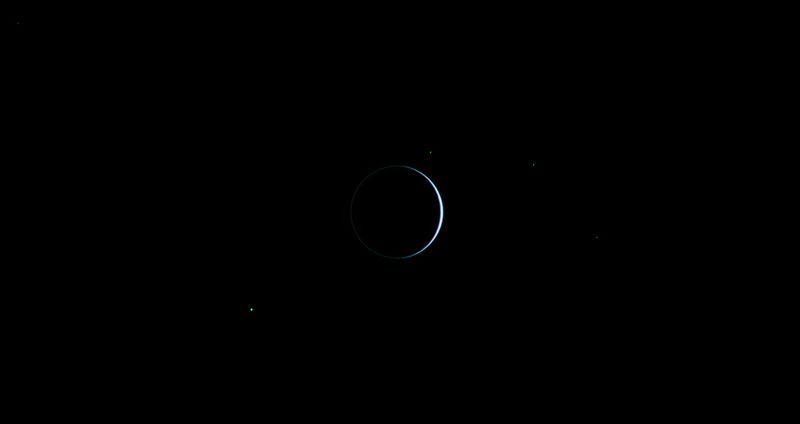The Pandemonium Nebula
Link to Systembodies Raw Viwer
Right Ascension: 8h 31m 11.99s
Declination: 28°37'12"
Distance: 308 parsecs (1005 light years)
The Pandemonium Nebula, aka Pandemonium, originally designated UNTJS 010, is a UN claimed solar system accessed from the Uwazi crossroads. It features two protostars amongst a thick level 3 nebula. Pandemonium is named after the Gygaxian interpretation, the Windswept Depths, of John Milton's city of hell in his book Paradise Lost.
[Astrographic Survey Report
Conducted March 2036
Pandemonium is a fascinating system located about 308 parsecs (1005 light years) from Earth at right ascension 8h 31m 11.99s, declination 28°37'12", in the direction of the constellation Cancer. The system is embedded in a large cloud of gas and dust approximately 20.6 parsecs (67 light years) in diameter which is a site of active star formation. Pandemonium itself is a protostar (estimated age 40 million years) evolving toward the main sequence, of stellar classification G5-V. In this stage of development, it is still collapsing, with a radius 2.5 times that of Sol, with 94% of Sol's mass, but only 32% of Sol's luminosity.
The nebula around the system is dense enough to pose a navigational hazard for ships traversing the system. Based on interplanetary medium density samples taken near the jump point, it is estimated that each level of armor on a vessel will allow for approximately 833 kps of maximum speed before the incoming dust/gas flux poses a threat to vessel integrity.
The system contains two protoplanets. The innermost planet tentatively named Cocytus (of the Venusian subtype) orbits only 26.5m km from the primary and contains a thick CO2/NO2 atmosphere and a surface temperature of nearly 1100°C. While its size (its radius almost exactly that of Earth while its mass is 26% higher than Earth's) give it a surface gravity of 1.26g, the crushing atmosphere and hellish temperatures preclude the system for consideration in first-wave colonization efforts.
The outermost planet is a small protoplanetoid only 1000 km in diameter and massing about 0.0006 times the mass of Earth. It has no atmosphere and not enough surface gravity to maintain human habitation.
It is expected that as this system evolves, more planets may form, but this will happen on time scales far too long to be of immediate concern.
System Images

Fig. 1: System overview of UNTJS 010, showing the location of jump point survey locations and the entry jump point from Uwazi.

Fig. 2: Detail of planetary system of UNTJS 010.
Fig. 3: The nebula containing UNTJS 010 as seen from Earth. FOV 3°. Prominent bright stars in the field have been labeled.
Fig. 4: UNTJS 010-A 'Cocytus' I as seen from the entry jump point, FOV 10". The green-hued lights are distant stars whose red light has been scattered by the nebula surrounding the system.
Fig. 5: UNTJS 010-A II as seen from the entry jump point, FOV 1".


